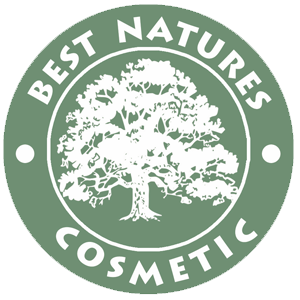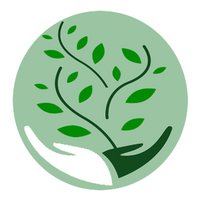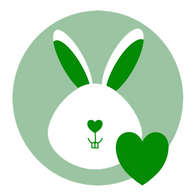5 of 47 products
5 of 47 products
Sort by:
Essential Oils
From $3.00
Unit price perCedarwood Atlas Oil can be used to assist with acne, arthritis, bronchitis, coughing, cystitis, dandruff, dermatitis, stress. It has warming, uplifting, and toning properties. Cedarwood Atlas Essential Oil is considered to be comforting, reviving and an aphrodisiac.
Atlas Cedarwood Essential Oil has been used in medicines and cosmetics throughout the ages. Atlas Cedarwood has been used in hair loss blends. Atlas Cedarwood Oil is especially good for energy work and healing the energy field. This oil is good for meditation and creating sacred space. Cedar is a Semitic word meaning "the power of spiritual strength". While many oils claim to be cedars; Atlas Cedar is truly a cedar.
What is the Spiritual and Emotional Influence? Cedarwood oil helps you embrace the feeling of being totally safe and secure with yourself as well as in your environment. As fears are released, the heart is open to spiritual love and protection which also brings self acceptance and love.
What Chakra is Affected? The heart chakra expands using this oil.
What are the corresponding Chakra Colors? Yellow and red.
| Botanical Name | Cedrus atlantica |
|---|---|
| Country of origin | Morocco |
| Cultivation | Conventional (Non GMO) |
| Extraction Method | Steam Distilled |
| Plant part | Wood |
| Color | Golden yellow to orange-brown liquid. |
| Scent | Cedarwood Atlas Oil has a woody, sweet, sharper note than Virginian Cedarwood, slight aroma reminiscent of artificial mothballs, balsamic. |
| Strength of Aroma | Strong |
| Note | Middle |
| Ingredients | Cedrus atlantica. Main Constituents: γ-Himalachene: 23%, β-Himalachene: 46% |
| Usage |
Use diluted - 50:50 dilution (one part essential oil: one part of carrier oil). Then, apply several drops (2-4) on location, ankles and wrists, Apply to chakras/vitaflex points . Directly inhale or diffuse. |
| Blends well with | Rosewood, Bergamot, Cypress, Cassia, Jasmine, Juniper, Neroli, Labdanum, Frankincense, Clary Sage, Vetiver, Rosemary, Ylang-ylang. |
| History | This Cedarwood originated in the Atlas Mountains in North Africa. In former times, linen chests were frequently crafted from this wood to keep moths out. To date, clothes hangers are frequently crafted from this wood. The ancient Egyptians already used this oil, namely to embalm, for cosmetics and perfumery. |
| Warnings | Non-toxic, non-irritant. Avoid during pregnancy. |
| Manufacture | Best Natures Cosmetic |
| Country of Manufacture | Canada |
| Disclaimer |
This information is for educational purposes only, it is not intended to treat, cure, prevent or, diagnose any disease or condition. Nor is it intended to prescribe in any way. This information is for educational purposes only and may not be complete, nor may its data be accurate. As with all essential oils, never use them undiluted. Do not take internally unless working with a qualified and expert practitioner. Keep away from children. If applying an essential oil to your skin always perform a small patch test to an insensitive part of the body (after you have properly diluted the oil in an appropriate carrier. |
From $8.00
Unit price perHelichrysum is a highly aromatic herb that has the capacity to grow in the most inclement of soil, hence its nickname “everlast.” It is native to the Mediterranean and North Africa and is widely cultivated in Spain, Italy, and Yugoslavia. It has been praised in aromatherapy most notably for bruises and wound healing. Extracts are also added to sunscreen to protect the skin from ultraviolet sundays.
Helichrysum assists with circulatory ailments such as varicose veins, bruises, and broken capillaries. It is also a wonderful skin tonic as it stimulates the production of new skin cells, vivifying the skin with an influx of healing cells and helping with acne, dermatitis, eczema, stretch marks, herpes, scar tissue, mature skin, and burns. The astringent properties constrict and help to reverse sagging skin. It also soothes and calms muscle spasms and aches, relieving pain associated with stiff joints and rheumatism related ailments. Lastly, the oil is is prized for relieving chronic coughs, bronchitis, sinus infections, excess mucous, and the common cold.
| Botanical Name | Helichrysum Gymocephalum |
|---|---|
| Country of origin | Madagascar |
| Cultivation | Wild harvested |
| Extraction Method | Steam Distilled |
| Plant part | Flowers |
| Color | A thin, clear, pale yellow to yellow liquid. |
| Scent | A Strong, Fresh, Camphorous, Herbaceous, Earthy Scent |
| Strength of Aroma | Medium |
| Note | Middle |
| Ingredients | Helichrysum Gymocephalum |
| Usage |
Bath (may need fixed oil), inhaler, light bulb ring, massage, mist spray, steam inhalation. Use diluted - 50:50 dilution (one part essential oil: one part of carrier oil). Then, apply several drops (2-4) on location, ankles and wrists. Apply to chakras/vitaflex points. Directly inhale or diffuse. |
| Blends well with | Chamomile, Lavender, Clary Sage, Rose, Clove Bud and any of the oils from the citrus oil family. |
| History |
Helichrysum has silvery gray, grassy foliage with a collection of golden flowers that blossom in midsummer, and whose colour last long after they have been picked and dried. Its name is derived from the Greek word helios meaning 'sun' and chrysos meaning 'gold'. This is a reference to the golden color of many of the flowers from this botanical genus. Helichrysum has been used since the time of the ancient who often used it after battles. |
| Warnings | If you are pregnant, consult a qualified aromatherapist for suitability and safety of specific oils. Many oils should not be used during pregnancy, some only need to be avoided for the first 3 - 4 months. |
| Manufacture | Best Natures Cosmetic |
| Country of Manufacture | Canada |
| Disclaimer |
This information is for educational purposes only, it is not intended to treat, cure, prevent or, diagnose any disease or condition. Nor is it intended to prescribe in any way. This information is for educational purposes only and may not be complete, nor may its data be accurate. |
From $25.00
Unit price perNeroli Essential Oil increases circulation and stimulates new cell growth. It can prevent scarring and stretch marks, and has been found useful in treating skin conditions linked to emotional stress. Any type of skin can benefit from this oil, although it is particularly good for dry, irritated or sensitive skin. It regulates oiliness and minimizes enlarged pores. Neroli Oil helps to clear acne and blemished skin, especially if the skin lacks moisture. With regular treatment, it can reduce the appearance of fragile or broken capillaries and varicose veins. Other properties include being antidepressant, antiseptic, antispasmodic, aphrodisiac, carminative, cordial, deodorant, digestive, stimulant (nervous) and tonic (cardiac, circulatory).
Neroli essential oil or orange blossom oil supports the digestive system and nervous system. Known for its healing effects on the mind, body and spirit it is a highly regarded oil used in Ancient Egypt.
It is produced from the orange blossom flower. When using this oil one feels very present. It takes about 1000 pounds of orange blossom flower to make 1 pound of Neroli oil.
Although the use of Neroli and orange blossoms go back to Ancient Egypt, the word Neroli was taken from a French born Italian princess, Anne-Marie de la Tremoille who was the Countess of Nerola. She introduced the oil in 1670 and used it for perfume and cologne.
Neroli essential oil is all about staying in the present moment and not reminiscing of the past; or even worrying about the future. For us to manifest what we want we must be completely in our power and be present energetically in the moment.
Interesting that panic and fear, are produced when we separate our mind and body. This is because we are literally in two different places. Neroli brings us back to one plane quickly and provides protection as well.
Neroli essential oil has been used for thousands of years to accelerate self-actualization by keeping us in the present, and gathering many of our scattered parts in the different etheric levels. It opens the heart and releases emotions of powerless and self imposed restriction.
Use diluted - 50:50 dilution (one part essential oil: one part of carrier oil). Then, apply several drops (2-4) on location, ankles and wrists. Apply to chakras/vitaflex points. Directly inhale or diffuse.
What Chakra is Affected? Sacral, heart and crown chakras.
What is the Corresponding Chakra Color? Green.
| Botanical Name | Citrus aurantium |
|---|---|
| Country of origin | Egypt |
| Cultivation | Conventional (Non GMO) |
| Extraction Method | Steam Distilled |
| Plant part | Blossom |
| Color | Dark greenish yellow liquid. |
| Scent | Neroli Essential Oil has a sweet, floral citrus aroma. Many aromatherapists refer to Neroli as an exotic and exquisite essential oil. |
| Strength of Aroma | Strong |
| Note | Middle |
| Ingredients | Citrus aurantium. Main Constituents: Linalyl acetate: 23%, Linalool: 16%, Limonene: 20.30%. |
| Usage |
Use diluted - 50:50 dilution (one part essential oil: one part of carrier oil). Then, apply several drops (2-4) on location, ankles and wrists. Apply to chakras/vitaflex points. Directly inhale or diffuse. |
| Blends well with | Lavender, Lemon, Clary Sage, Myrrh and spice oils such as Nutmeg, Cinnamon Bark and Clove Bud. |
| History | Though Bitter Orange Essential Oil has been around for centuries, Neroli Essential Oil wasn’t discovered until the seventeenth century. It was named after Anna Maria de la Tremoille, princess of Nerola. The oils properties were extremely valued by the people of Venice who used it against plague and fevers. |
| Warnings | This oil is non-toxic and non-sensitizing. Avoid use during pregnancy. |
| Manufacture | Best Natures Cosmetic |
| Country of Manufacture | Canada |
| Disclaimer |
This information is for educational purposes only, it is not intended to treat, cure, prevent or, diagnose any disease or condition. Nor is it intended to prescribe in any way. This information is for educational purposes only and may not be complete, nor may its data be accurate. |
From $4.00
Unit price perPetitgrain Essential Oil is believed to have uplifting properties. Aromatherapists have long used it to calm anger and stress, while it has been used in the skin care industry for acne, oily skin, and as a deodorizing agent.
| Botanical Name | Petitgrain bigarade |
|---|---|
| Country of origin | Italy |
| Cultivation | Conventional (Non GMO) |
| Extraction Method | Steam Distilled |
| Plant part | Leaves and Twigs |
| Color | Colorless to pale yellow liquid. |
| Scent | Petitgrain (Sicily) Essential Oil smells like orange blossoms with a bitter, floral, citrus and herbaceous undertone. |
| Strength of Aroma | Strong |
| Note | High |
| Ingredients | Main Constituents: Linalyl acetate: 45.92% |
| Usage |
Use diluted - 50:50 dilution (one part essential oil: one part of carrier oil). Then, apply several drops (2-4) on location, ankles and wrists. Apply to chakras/vitaflex points. Directly inhale or diffuse. |
| Blends well with | Bergamot, Cedarwood, Clary Sage, Geranium, Lavender, Lime, Jasmine, Neroli, Orange, Palmarosa, Rosemary, Sandalwood and Ylang-ylang. |
| History | Originally the oil was produced in distilleries from the unripe oranges when they were the size of cherries. This explains why it is named Petitgrain – which in French means little grains. Nonetheless, this proved to be uneconomical and so the oil began being extracted from the leaves and twigs of the orange tree instead. |
| Warnings | Petitgrain (Sicily) Essential Oil is generally non-toxic, non-irritant, non-sensitizing. Avoid use during pregnancy. |
| Manufacture | Best Natures Cosmetic |
| Country of Manufacture | Canada |
| Disclaimer |
This information is for educational purposes only, it is not intended to treat, cure, prevent or, diagnose any disease or condition. Nor is it intended to prescribe in any way. This information is for educational purposes only and may not be complete, nor may its data be accurate. |
From $3.50
Unit price perThe Tea Tree is a small tree or shrub with needle-like leaves. It is also domestically referred to as Ti-tree. It can grow up to 7 meters (20 feet) in height and thrives in marshy areas, though it is now cultivated in plantations. The Tea Tree is very robust; it is ready for cutting only two years after its’ previous harvest.Acne
One of the most well known uses of tea tree oil is in acne treatment. In fact, a five percent solution of tea tree oil has been shown to be as effective as a five percent solution of the common acne treatment product known as benzoyl peroxide, according to the Mayo Clinic. Tea tree oil works on acne by reducing the population of the acne-related bacteria Propionibacterium acnes (P. acnes). P. acnes is partially responsible for the inflammation and infection that results in more serious forms of inflammatory acne.
Dandruff
Dandruff is another skin condition that can benefit from the use of tea tree oil. One common possible cause of dandruff is the overgrowth of a fungus known as malassezia. Malassezia is commonly found on the skin of your scalp, but causes dandruff problems if it is able to grow out of control. Tea tree oil can be used to reduce population of the fungus, resulting in dandruff relief.
Parasitic Skin Infestations
Tea tree oil may also be used as a natural treatment for skin infestations such as lice, scabies and bedbugs, according to the American Academy of Dermatology. Tea tree oil is used to kill the parasites, relieving skin irritation from the infestation.
Inflammation
When your skin comes in contact with allergens, your body may respond by activating histamine, which causes the skin to become inflamed. Tea tree oil may be used to reduce this inflammation, but more research is needed to confirm the full benefits of the oil, according to the National Institutes of Health.
Athlete's Foot
Athlete's foot may also benefit from the use of tea tree oil. Athlete's foot is a common fungal-based skin problem that can cause severe itching and burning sensations on the affected area. Tea tree oil works on athlete's foot by killing the fungi associated with the infection.
Use diluted - 50:50 dilution (one part essential oil: one part of carrier oil). Then, apply several drops (2-4) on location, ankles and wrists. Apply to chakras/vitaflex points. Directly inhale or diffuse.
What Chakra is Affected? This oil will actually expand all the chakras and then align them with the crown chakra.
What is the Corresponding Chakra Color? Yellow and blue.
| Botanical Name | Melaleuca alternifolia |
|---|---|
| Country of origin | Australia |
| Cultivation | Conventional (Non GMO) |
| Extraction Method | Steam Distilled |
| Plant part | Leaves |
| Color | Colorless to pale yellow clear liquid. |
| Scent | Tee Tree Essential Oil has a fresh, antiseptic and medicinal scent. It also has characteristic mint and spice back-notes. |
| Strength of Aroma | Medium |
| Note | High |
| Ingredients | Melaleuca alternifolia |
| Usage |
Use diluted - 50:50 dilution (one part essential oil: one part of carrier oil). Then, apply several drops (2-4) on location, ankles and wrists. Apply to chakras/vitaflex points. Directly inhale or diffuse. |
| Blends well with |
Cinnamon Bark, Clary Sage, Clove Bud, Geranium, Lavender, Lemon, Myrrh, Nutmeg, Rosewood, Rosemary and Thyme. |
| History | The aboriginal people of Australia have long used Tea tree oil; similarly, Tea tree has a long history of use within the field of aromatherapy. In World War Two, the producers and the cutters of Tea Tree were exempt from military service until enough essential oil had been accumulated. The oil was a highly valued product as it was issued to each soldier and sailor as part of their kit in order to treat tropical infections and infected wounds. |
| Warnings | Tea Tree Essential Oil may cause dermal sensitization in some people. Do not take internally. |
| Manufacture | Best Natures Cosmetic |
| Country of Manufacture | Canada |
| Disclaimer |
This information is for educational purposes only, it is not intended to treat, cure, prevent or, diagnose any disease or condition. Nor is it intended to prescribe in any way. This information is for educational purposes only and may not be complete, nor may its data be accurate. |













